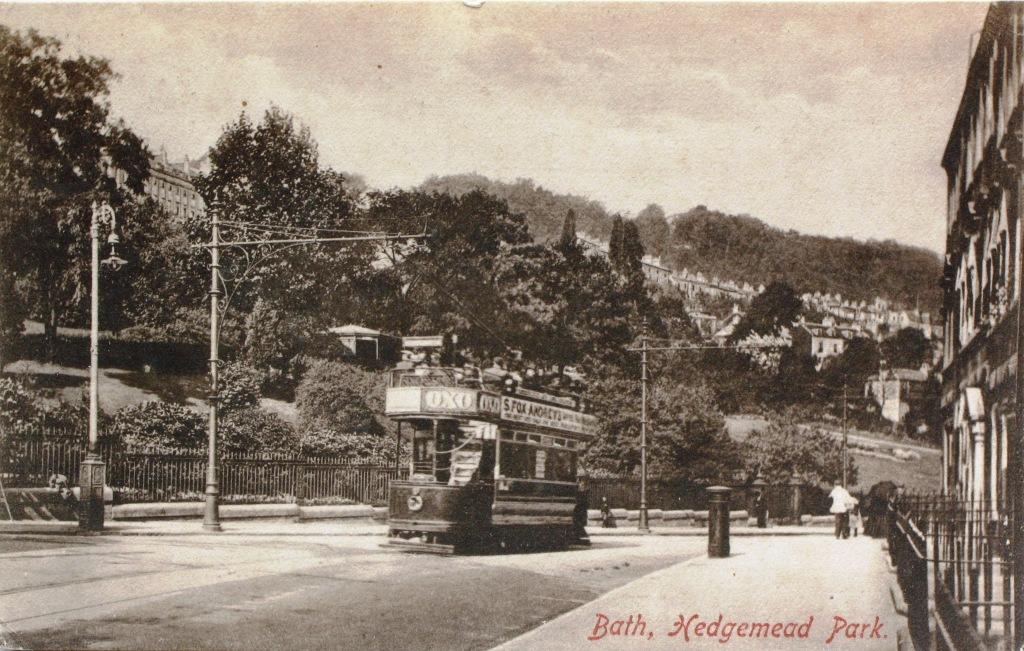By Harry Mottram: Trams could return to Bath after an absence of more than 85 years in order to ease congestion and improve transport links. That’s the view of the Bath and Bristol Area Trams Association (BABATA) who have given their reaction to the Metro Mayor Dan Norris’s plans to the change the main A4 road into Bath from Bristol.
In a letter to the editor of Bath Voice they said: “BABATA whilst supporting the bus lane scheme and buses generally, urges WECA to also bring forward plans for a tram link from Bath to Bristol. This is because buses do not attract car drivers and do not therefore reduce congestion but trams provenly do.”
The group said that a tram link, integrated with bus services, through Saltford would work as uses have been shown not to attract car drivers, and so do not reduce congestion, whereas trams always create a significant switch from cars as they are much more acceptable to drivers for several reasons – speed, reliability, frequency, lower cost, comfort, prestige. They explained that trams would be given the green light at junctions with a ‘Green Wave Traffic Light Pre-emption which allows the tram to move quickly through congestion even whilst on the same road, without segregation, but cannot be applied to buses for technical and economic reasons. their case for trams has more details at https://bathtrams.uk/
The letter to the editor: Dear Sir, We support WECA’s plans to improve connectivity between and along the Bath to Bristol corridor with bus lanes but the only solution that will work effectively and which has been demonstrated repeatedly in the UK is a steel-wheel tram – nowhere in the UK has a bus service alone, ever attracted sufficient drivers out of cars to reduce congestion, or improve the environment and the local economy, whereas trams, on high density routes, integrated with buses as appropriate always do. So, we see the bus lane as an interim solution whilst a comprehensive tram line plan is prepared. This is why trams are so common in Europe with correspondingly less congestion and much better economic performance.” See: https://bathtrams.uk/why-trams-work-and-buses-cut-car-driving-congestion-pollution-emissions-but-buses-on-their-own-wont/ and https://bathtrams.uk/buses-and-busways-some-factual-observations-by-prof-lewis-lesley/ and here for failure of the £10m Swansea bus scheme https://bathtrams.uk/infamous-swansea-bendy-buses-scrapped-no-longer-viable/
Yours sincerely
Dave Andrews, BABATA Chair
WECA’s plans
WECA published proposals last year with a consultation (now closed) to improve cycling and walking routes from the the Keynsham bypass to Bath including greater priority for buses. The said at the time: “To cut the jams and reduce pollution, we need to take a hard look at how we move around. One answer is to travel less by car and more by bus, and to cycle or walk for shorter everyday journeys. But for people to travel less by car, people need to be offered better choices than the ones they have now. They need good alternatives to the car, like joined-up public transport, faster buses and safer walking and cycling routes. To tackle our key transport challenges in the region, the West of England Combined Authority has secured more than £½ billion funding from central government – more per head than anywhere else in the country.”
You can read more on the WECA website at: https://haveyoursaywest.co.uk/

Bath’s Trams
Bath’s Trams disappeared back in 1939 although they had been in decline before that. they first ran as horse drawn trams on a 4ft gauge track from 1880 switching to electric powered trams at the fin de circle. The Bath Tramways Company was taken over by the Bath Electric Tramways Company in 1903 but in the 1930s the firm began replacing the trams with buses in age when there were few cars on the roads. They ran from a depot off Walcot Street and had lines to most parts of the city including Bathford, Combe Down, Weston, Oldfield Park and even Newton St Looe.

